The imposition of kinesiology tape on the elbow area
Stabilisation of the elbow
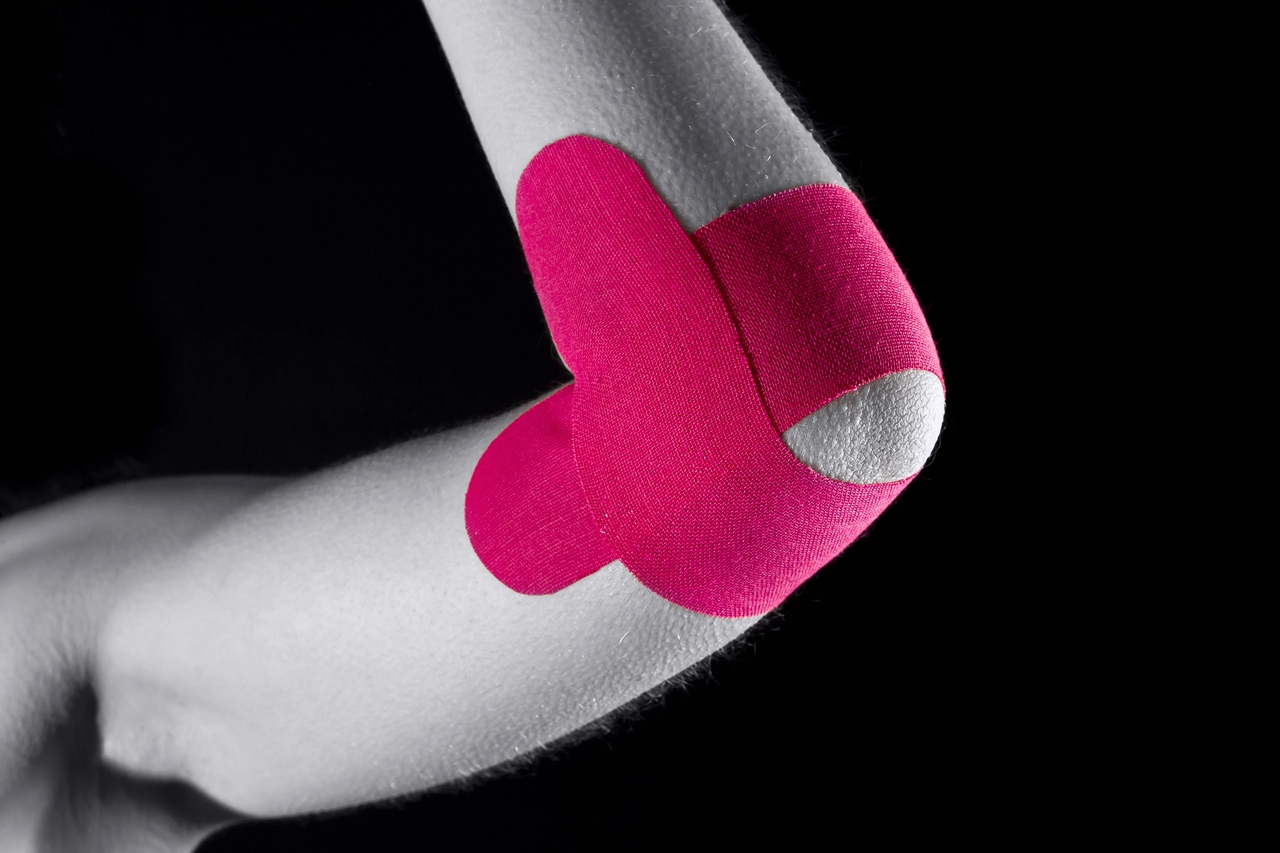
Indications: Instability of the elbow
1. This method requires two I-tapes of 15-18 cm long each.
2. Ask the patient for maximal bending of his/her arm in the elbow up to 90 degrees.
3. Using ligament method, apply an operating zone of the first tape on the proximal part of the radial and ulnar bone near the base of the elbow. Apply the base of the tape without tension on the medial and lateral side of the distal part of humerus.
4. Also using ligament method, apply an operating zone of the second tape on the distal part of the humeral bone near the base of the elbow, and the ends of the tape are applied without tension on the medial and lateral sides of the proximal part of the ulnar and ulnar bone near the base of the elbow.
Lateral epicondylitis

Indications: Hypertonic forearm extensors, myofascial pain syndrome, traumatic epicondylitis
1. For this method, you require two I-tapes, one of which is applied on forearm extensors, another one — on supinator muscle.
2. The first I-tape (pink colour on the image) is applied on the forearm extensors, beginning from the wrist towards lateral shoulder epicondylus to reduce muscular tonicity.
3. Apply the second I-tape (blue colour in this case) on the supinator muscle. Begin application from lateral shoulder epicondylus and finish on the radial surface of the forearm. This method has a restoration effect.
4. It is important to note that the body of the tape is applied with a 15 % tension, and, in turns, the base and anchors of tapes are applied without tension.
Lateral epicondylitis (variant 2)
4. It is important to note that the body of the tape is applied with a 15 % tension, and, in turns, the base and anchors of tapes are applied without tension.
Lateral epicondylitis (variant 2)
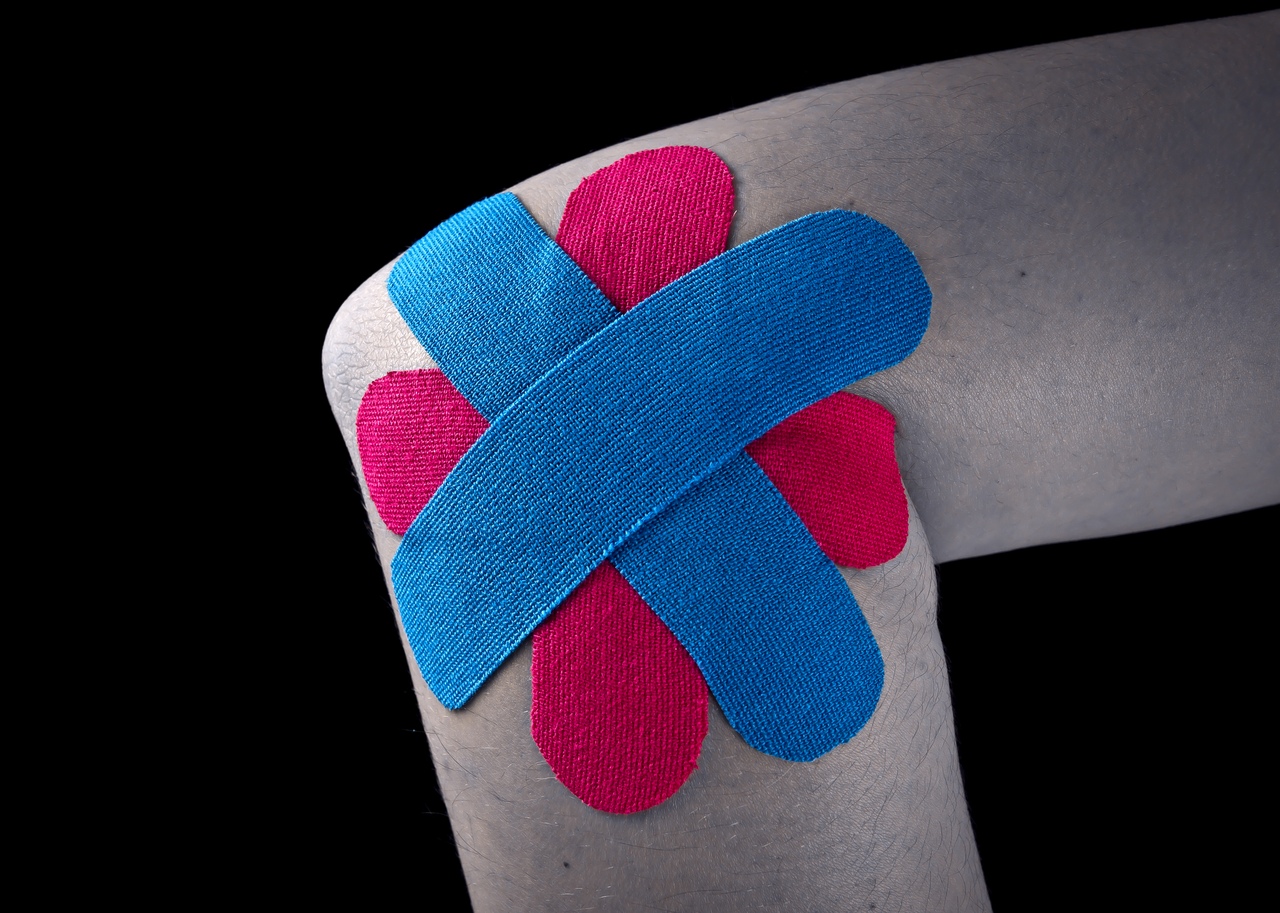
Indications: Traumatic epicondylitis, pain in the lateral part of the elbow joint
1. This method requires four pieces of the tapes equal in length (about 5-7 cm), of 2.5 cm wide.
2. Apply all 4 tapes in the form of a cross over the pain point, in the region of muscle insertion to the lateral epicondyle of humerus using ligament method.
Medial epicondylitis
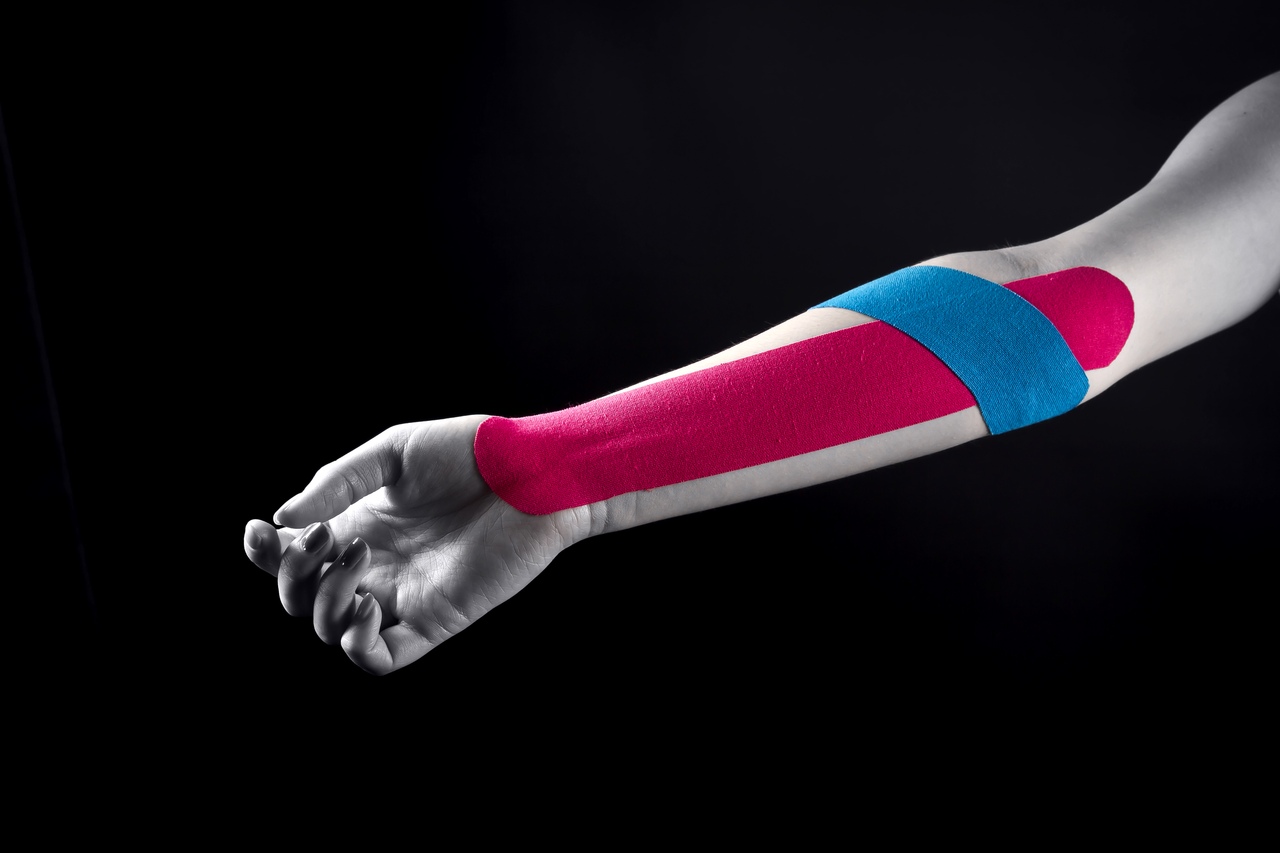
Indications: Traumatic epicondylitis, pain in the medial part of the elbow joint
1. This method requires two I-tapes, one of which is applied on forearm extensors, another one — on round pronator muscle.
2. The first I-tape (pink colour on the image) is applied on the forearm extensors, beginning from the wrist towards medial shoulder epicondylus to reduce muscular tonicity.
3. Apply the second I-tape (blue colour in this case) on round pronator muscle. Begin application from medial shoulder epicondylus and finish on the frontal surface of the forearm.
4. It is important to note that the body of the tape is applied with a 15 % tension, and, in turns, the base and anchors of tapes are applied without tension.
Dislocation in the elbow
4. It is important to note that the body of the tape is applied with a 15 % tension, and, in turns, the base and anchors of tapes are applied without tension.
Dislocation in the elbow

Indications: Dislocation in the elbow, hypermobility in the elbow
1. Using this ligament method, we will require one piece of I-tape.
2. Elbow is in the neutral position — flexion up to 90 degrees.
3. Apply I-tape along the damaged area.
4. The body of the tape is applied on the damaged area with a maximal tension beginning from the central part. Apply I-tape ends without tension.
Bursitis of olecranon
4. The body of the tape is applied on the damaged area with a maximal tension beginning from the central part. Apply I-tape ends without tension.
Bursitis of olecranon
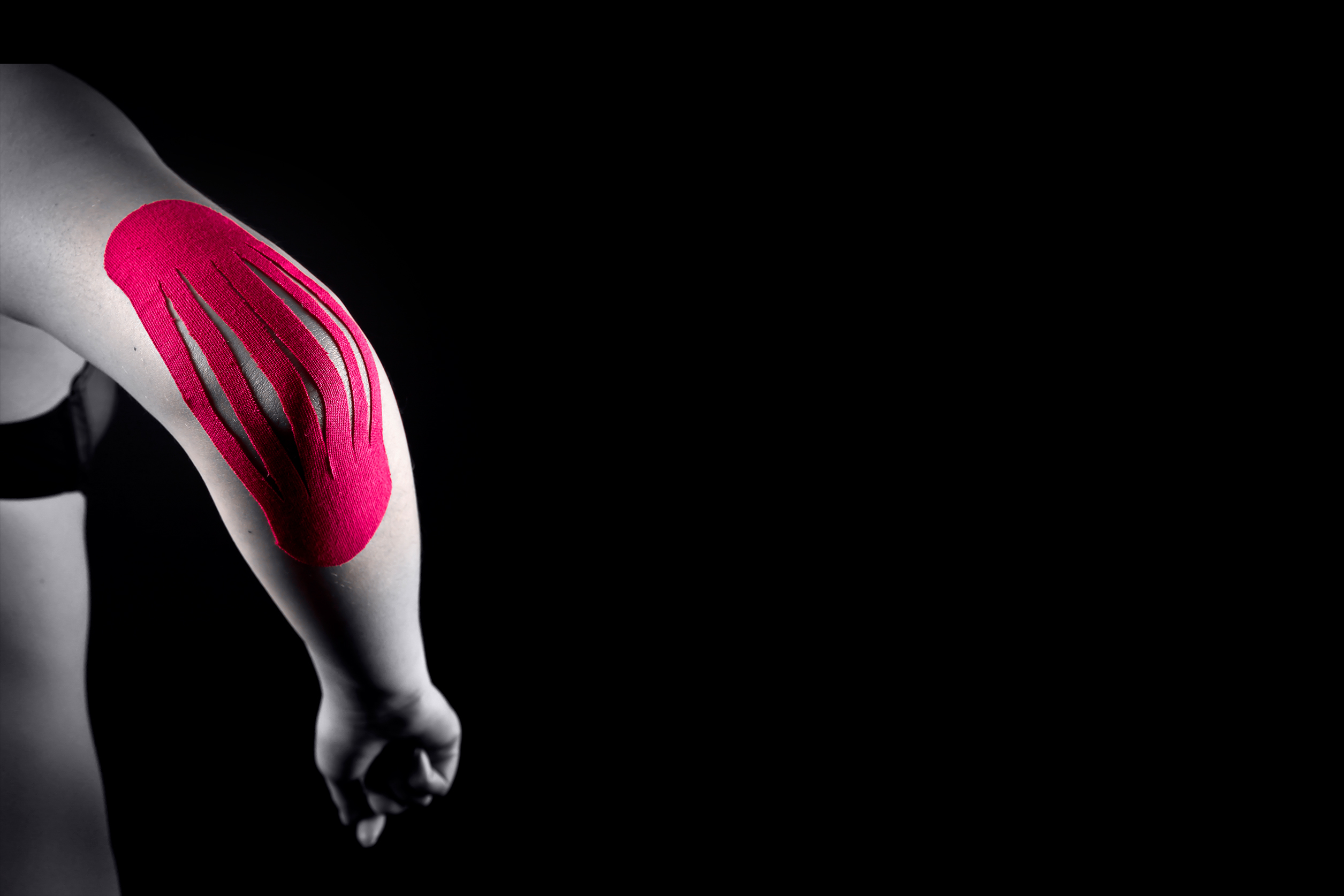
Indications: Bursitis, pain in the region of the olecranon
1. In this case, we need one piece of the tape approximately 13-15 cm long. After rounding of the ends, double up the tape and cut in by strips. The ends (about 3 cm on each side) are left integer.
2. Ask the patient to extend his/her limbs in the elbow.
3. Apply both bases of the tape proximally and distally to the elbow.
4. Bend the limb to the maximum in the elbow joint and apply strips of the tape in the region of olecranon and on its sides.
Palmaris longus muscle
Palmaris longus muscle
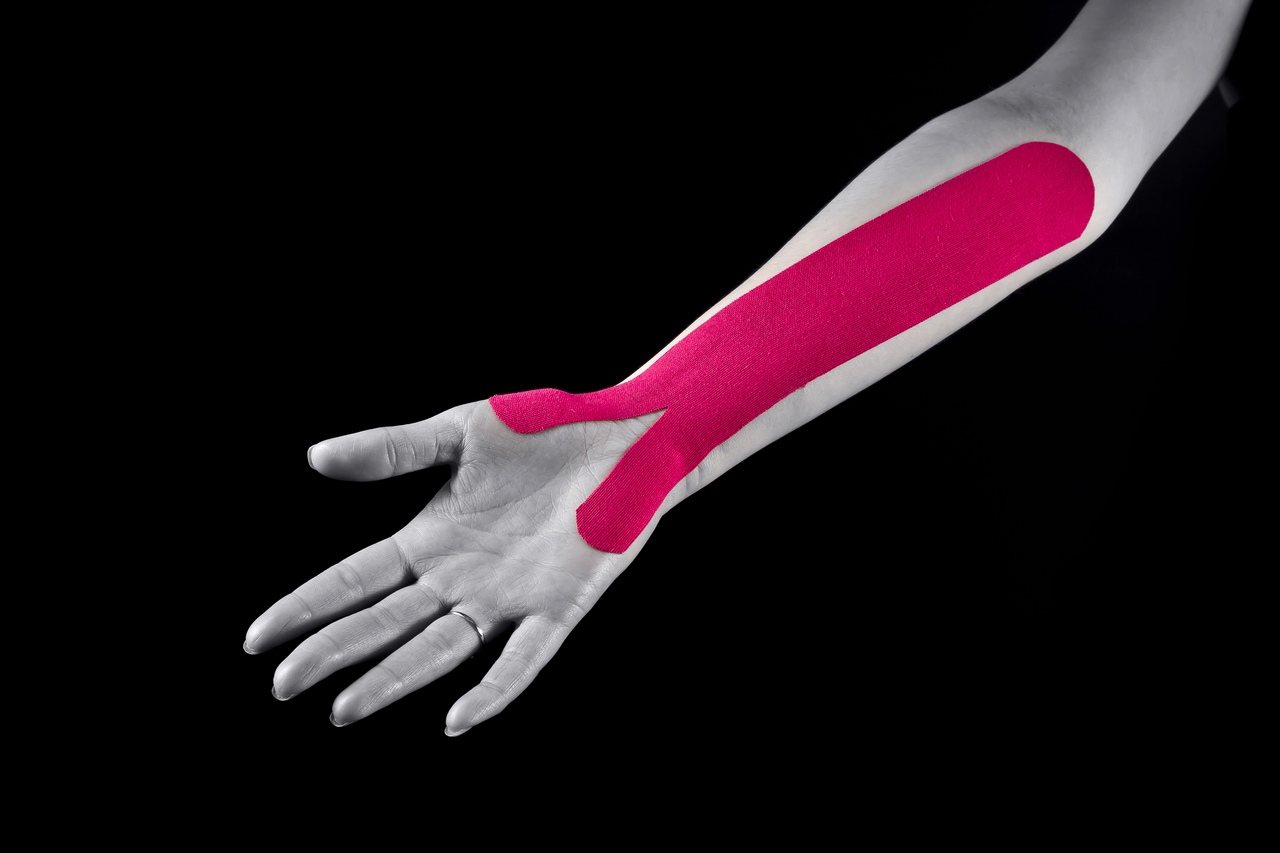
Indications: Hypertonic muscle, trigger points, carpal tunnel syndrome
1. We need one Y-tape approximately 20 cm long.
2. Apply the strips of the tape without tension from thenar and hypothenar.
3. Then following extension in the wrist, apply an operating part of the tape with a 15 % tension towards the medial condyle.
4. Apply a tape anchor without tension.
Install NOW "Medical Taping" Mobile App On Android or iOS!
More than 120 instructions!
English and Russian language! Professional Pictures!


March 2020
April 2020
May 2020
 Shopping cart (0)
Shopping cart (0)